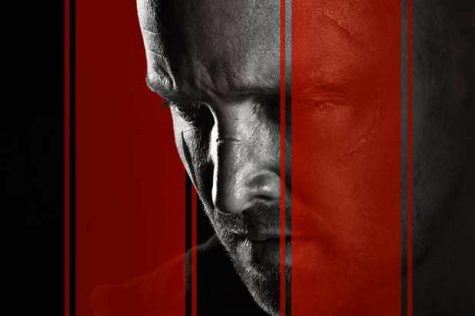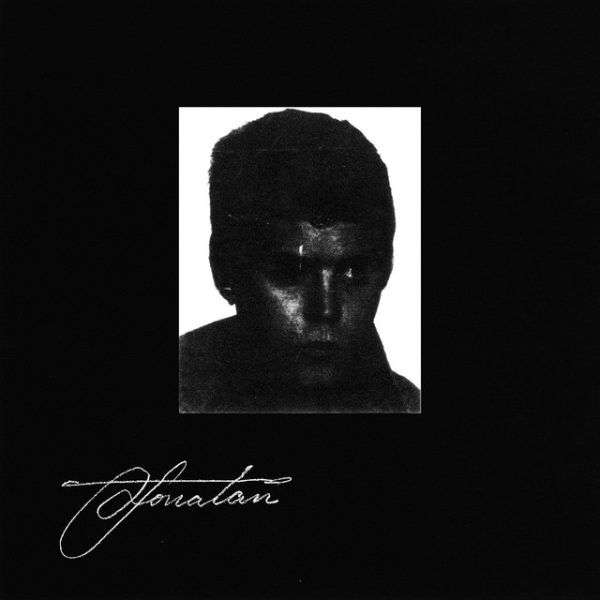El Camino Summary & Review
Following the story of Jesse Pinkman, Walter White’s partner in crime in the hit show Breaking Bad, the Netflix original El Camino released on Friday, October 11. The movie isn’t the first spin off of Breaking Bad, as Better Call Saul follows the life of Saul Goodman, as a prequel series to the original In El Camino, Pinkman, looks to get his life back in order after his many ordeals with Walter White, aka Heisenberg. Be advised, spoilers ahead.

In the final season of Breaking Bad, Todd, one of Walt and Jesse’s henchmen, introduces the duo to a neo-nazi group, who they use to “tie up loose ends” in prison. Later on, in Ozymandias, the group has a shootout with the DEA, which had recently taken Jesse into custody. In the shootout, Hank is shot, and his partner, Gomez, is killed. The gang then takes Jesse with them, along with seven barrels full of Walt’s money. Jesse is beaten, questioned about his time with the DEA, and forced to cook meth with Todd. Walt returns from his isolation in New Hampshire, and uses a rifle jerry-rigged in his trunk to free Jesse, and is shot in the process. Jesse and Walt finish off the gang members, and as Walt passes away in the crew’s lab, Jesse drives away, crying tears of joy, in an El Camino, a Chevrolet coupe which was “adapted from a two-door station wagon platform that integrated the cab and cargo bed into the body.”
The movie kicks off with a flashback involving Jesse and his enemy-turned-partner Mike Ehrmantraut. The two are standing on the bank of a stream discussing their futures once out of the meth industry. Mike lays out his plan to go to Alaska, the “last frontier,” which foreshadows the end of the film. Viewers are then thrown back into the present, with Jesse behind the wheel of the El Camino leaving the gang’s cook site and headquarters. He evades a police convoy heading to the compound, and arrives at Skinny Pete’s house, where he and Badger are playing the video game Grand Theft Auto. The two take Jesse in, wondering if what they’d heard about him is real. He showers, shaves, and starts to decide what to do to start his new life. First off, Jesse decides that he needs to get rid of the El Camino, and Skinny Pete and Badger work out a way to rid the crew of the vehicle. I found this interaction rather odd, as in the original series, Badger and Skinny Pete were known as relatively stupid characters, and the fact that they put together such a good plan in so short a time frame is very out of character for them.
The movie continues on as Jesse makes a trip to Todd’s apartment, and as flashbacks describing their relationship follow along with his actions. A flashback where Todd asks Jesse to help him hide his maid’s body is especially important to the plot, hinting at the reason for Jesse’s trip to Todd’s house, and providing more background on his relationship with Todd. The use of different camera angles in the beginning of the flashback help show the power dynamic between the two, and as it goes on, Todd shows how he has, in a sense, “broken” Jesse through his time in captivity. He brings Jesse to his apartment, where he forces Jesse to help hide the body of his maid, who had found his stash of meth-money. After the flashback, we see Jesse spend the night searching for the stash, which is when one of my favorite scenes occurs. In the scene, multiple versions of Jesse are shown vigorously searching the house as electronic music plays in the background, which plays on the occurrence of montages in Breaking Bad. The film uses music, along with samples from the Breaking Bad theme, to help bridge the gap between the two pieces of media.
After Jesse finds the stash, two men posing as police officers, Neil and Casey, arrive at the apartment in search of the same loot he hoped to find. After a heated dispute at gunpoint, Jesse and the men agree to split the cash three ways, as Jesse knows the location of the stash, and they don’t. As Jesse leaves the apartment alongside Neil, the fake cop remarks, “I was wondering when you’d remember me,” as Jesse stares at his truck, which reads “Kandy Mobile Welding”. Jesse then attempts to use the money to buy his way out through the same “cleanup guy” Walt used in “Granite State,” but comes up $1800 short. After that, he breaks into his parents’ house in hopes of finding the cash he needed, but instead he found two pistols which prove helpful in the following interaction.
After leaving his parents’ house, Jesse heads to Kandy Mobile Welding, where the two fake cops are hiding out. He arrives just as a band of call girls ordered by the Kandy Mobile Welding guys do the same. Before the action starts up, we’re thrown back into a flashback, which elaborates on Neil’s “I was wondering when you’d remember me” comment. The flashback shows the welder working on a rig to keep Jesse chained up while cooking, and after he’s finished, we see Jesse being forced to run back and forth on the chain to “test it’s durability.” The whole scene is tough to watch, as we see Jesse risking injury without his consent just because Todd and Neil wanted to have some fun. With each clang of the chain, and shot of Jesse falling to the floor weakly, we begin to hate Neil more and more. I believe the use of these two scenes in quick succession helps the directors make the audience hate the welding company, and justify Jesse’s actions in the following scene.
As the call girls leave, Jesse walks into the Kandy Mobile Welding company office, where the two fake cops are partying with their friends. Jesse asks for the last $1800, but Neil, who clearly has some illicit substance in his system, decides that a wild west-style showdown would be a better option. The two participants ready their guns, but before Neil has a chance to draw, Jesse shoots him with the second gun in his pocket. I found this scene very important for the film, as it shows how far Jesse is willing to go to earn his freedom, and how his time in captivity has hardened and desensitized him even further. Jesse then has to shoot Casey, and it takes him quite a few too many shots to do so, considering he managed to hit Neil a few times without missing even though his gun was in his pocket. Jesse makes off with the money, and we’re shown the two final flashbacks to set El Camino up for an ending.
The first flashback is with Walt, the man who, arguably, pushed Jesse down his path of crime and desperation more than anyone else. He egged him on and manipulated him, but in this flashback, we’re shown a different, more loving side of Walt, where he suggests that Jesse go back to school and study business. Walt, in an optimistic tone, also says that he’s glad Jesse “didn’t have to wait [his] whole life to do something special.” He still manages to be condescending though, or at least ignorant, as he forgets that Jesse graduated high school. Next, we’re shown a flashback where Jesse interacts with his old girlfriend, Jane. Like Walt, she provides him with some important wisdom, arguing that he should stop going where the universe wants him to, and that he should follow his own path.
The flashback sequence ends, and we see Jesse in Alaska. The smuggler has gotten him out of New Mexico, and he’s followed Mike’s advice. He leaves the smuggler with a message for his girlfriend’s son, and remarks at how quiet it was. We see Jesse peel out of a pull-out, and his “Alaska: The Last Frontier” license plate backs up intensely close to the camera, which references both Mike’s comment at the beginning of the movie, and a similar shot in the final episode of Breaking Bad, “Felina”, in which we see Walt peel-out in a similar way, as his license plate reads “Live Free or Die”. The camera angles used in the El Camino at the beginning and the Jeep at the end are similar, but carry totally different tones, mainly because of the difference in emotion and sound.
One motif which I found prevalent in El Camino, along with Breaking Bad, was the idea that Jesse is chained to his past, or chained in general. The flashback with Neil and Todd is probably the best example of this, but it can also be seen throughout both media forms as Jesse works past obstacles blocking his way forward.
I found it interesting to see how the directors used the shot of the car driving down a highway in the trailer versus the actual film, as you could expect Jesse to be driving based on the trailer, but in reality it was Todd, an outside force. I think this plays on the bigger idea that Jesse has lacked an ability to choose throughout his life. He is still held totally accountable for his actions, but in reality it wasn’t really his choice, as figures like Walt and Todd forced his hand. More than just finding a way out of his old life, I think El Camino also shows how Jesse found his own voice, and an ability to make his own decisions. After all, ‘el camino’ in Spanish literally translates to ‘the way’ in English.
Another thing I found is how important Todd is to Jesse’s story. He got Jesse captured by the gang, and eventually became his salvation, his way out, his ‘el camino’. Todd, along with his time in captivity, clearly changed Jesse, and made him into the man he is in El Camino. Two instances that I found his experience specifically influential are the end of Breaking Bad and the beginning of El Camino, where Jesse is hysterical, laughing and crying at the same time, as he drives off in the El Camino, showing how traumatic the experience was. Another example is when Todd manages to stop Jesse from shooting him in flashbacks using just his words. He calms Jesse down with relative ease, which wouldn’t have happened before his time in captivity.
In conclusion, El Camino is a great follow-up to the hit series Breaking Bad, and fleshes out Jesse’s story in a very satisfying way. It shows how the characters affect each other in a good way, and how Jesse has changed and stayed the same. It could have had better continuity when it comes to character traits, specifically regarding Badger and Skinny Pete, but it’s definitely worth a watch.

My name’s Luke, I’m editor of the Lance this year, and I’m super excited to be a part of such a great program! I'm a senior at Hellgate, and this...




